
Vertical Integration and Horizontal Integration Ultimate guide for you
Horizontal integration is when two companies at the same stage of the production process merge or take over each other.. Forward vertical integration - when a business takes over a company at.
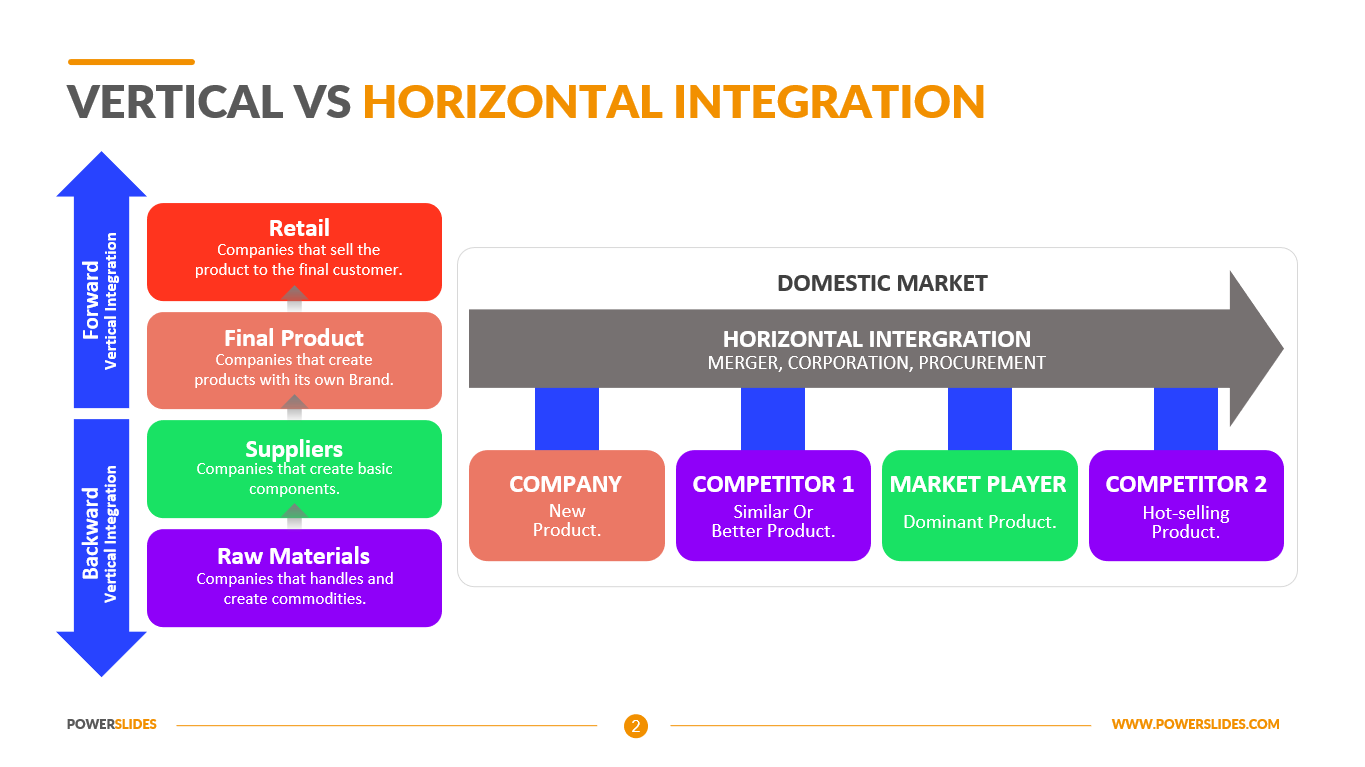
Vertical vs Horizontal Integration Editable PPT Templates
Vertical integration allows for control of the supply chain. Horizontal integration allows for control of the market and customer base. Examples include Nintendo buying Monolith Soft, Amazon starting its own delivery service, and Google purchasing Motorola. Examples include T-Mobile buying Sprint, Walt Disney taking over Pixar, and Petsmart.

Horizontal Integration Vs Vertical Integration 5 Best Differences To Learn
Horizontal integration refers to the expansion strategy adopted by the corporations, which involves acquiring one company from another company where both the companies are in the same business line and at the same value chain supply level. Conversely, vertical integration refers to the expansion strategy adopted by the corporations.

Horizontal Vs Vertical Integration
Horizontal integration means you are moving "horizontally" in your industry of merging with competitors with similar customer levels, whereas vertical integration is when you move "vertically" up or down the production process of acquiring suppliers or distributors within your same vertical, so you can own more of the production process internally.

Horizontal Vs. Vertical Integration In A nNutshell FourWeekMBA
FAQs about horizontal vs. vertical integration What is the difference between horizontal and vertical integration? Horizontal integration is the process of merging two or more businesses that are at the same stage of production while vertical integration involves uniting operations that span multiple stages of production, such as when a business buys out its suppliers or distributors.
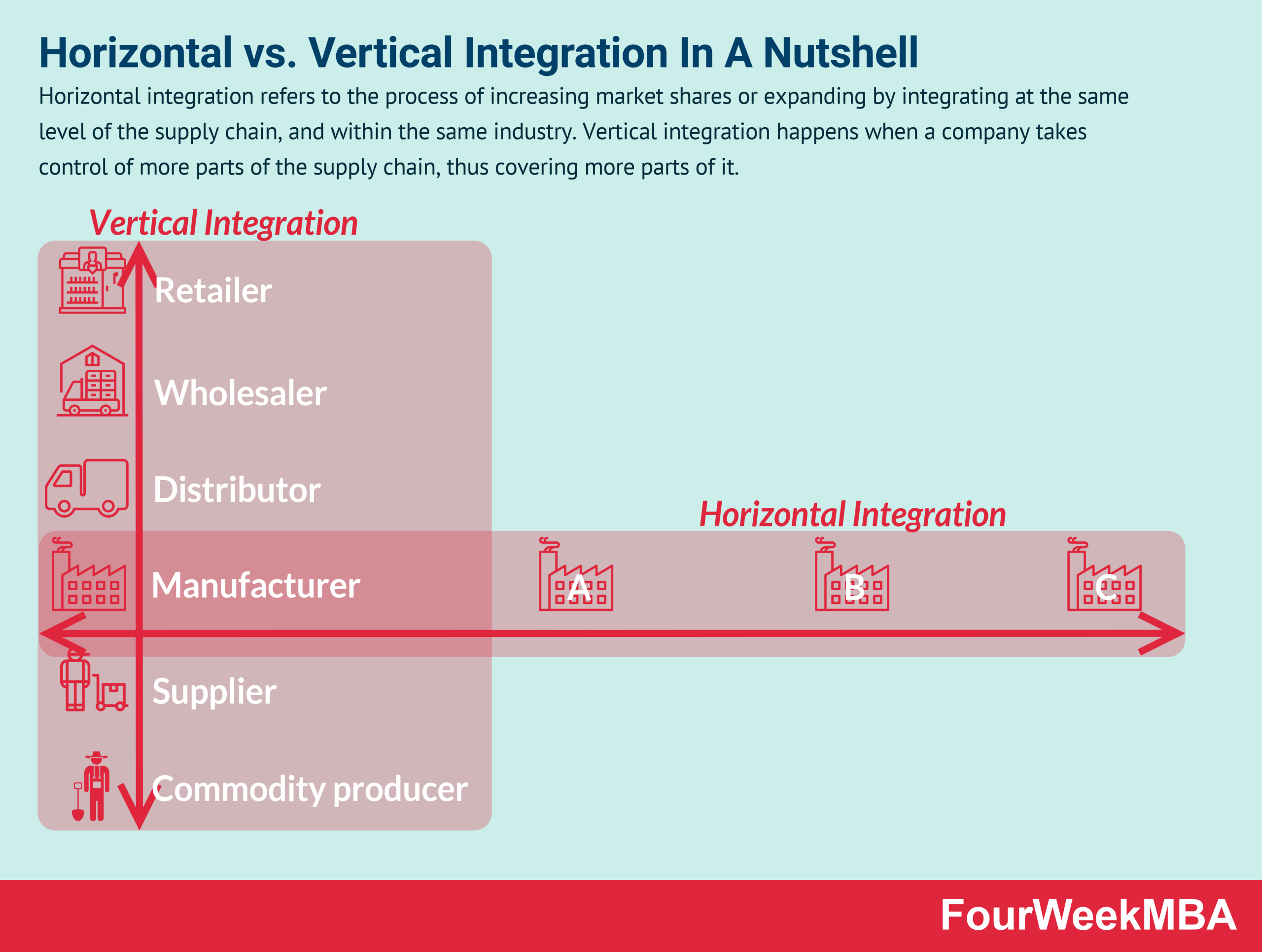
Horizontal Vs. Vertical Integration In A nNutshell FourWeekMBA
Horizontal and vertical integration are two strategies that firms can use to expand their market power, reduce costs, and increase efficiency. However, they also have different implications.
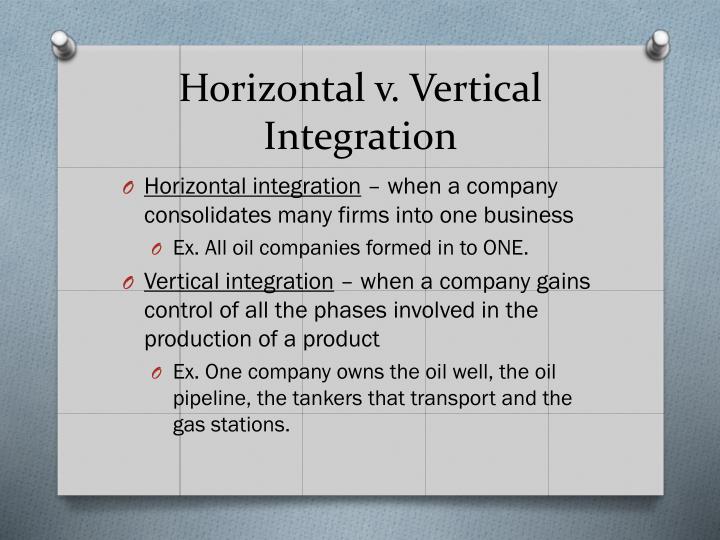
PPT The Industrialization of the United States PowerPoint Presentation ID1643583
Horizontal integration refers to a process in which a company acquires another company in the same industry for expansion. An organisation may also accomplish this form of integration by joining with another organisation of equivalent or higher power for the purposes of acquiring more influence, increasing revenue and expanding its customer base.

Difference between Horizontal vs Vertical Integration eFinanceManagement
1. Operations One of the key differences between horizontal and vertical integration is in the way that they create their products. Horizontal integration involves merging two companies with the same product or service, so they often utilize the same types of processes.

Horizontal and vertical integration Made easy Tourism Teacher
Key Differences Difference Between Horizontal and Vertical Integration Growth and expansion are the two needs of every firm, irrespective of its size and nature. Firms can grow and expand themselves by way of integration. There are two major forms of integration, i.e. Horizontal Integration and Vertical Integration.

What Does Horizontal Consolidation Mean? 16 Most Correct Answers
Horizontal Integration vs. Vertical Integration. Horizontal integration and vertical integration are both ways in which a company can expand its corporate footprint by acquiring one or more companies. However, each integration strategy takes a distinct approach and involves different objectives, benefits, drawbacks and potential results.
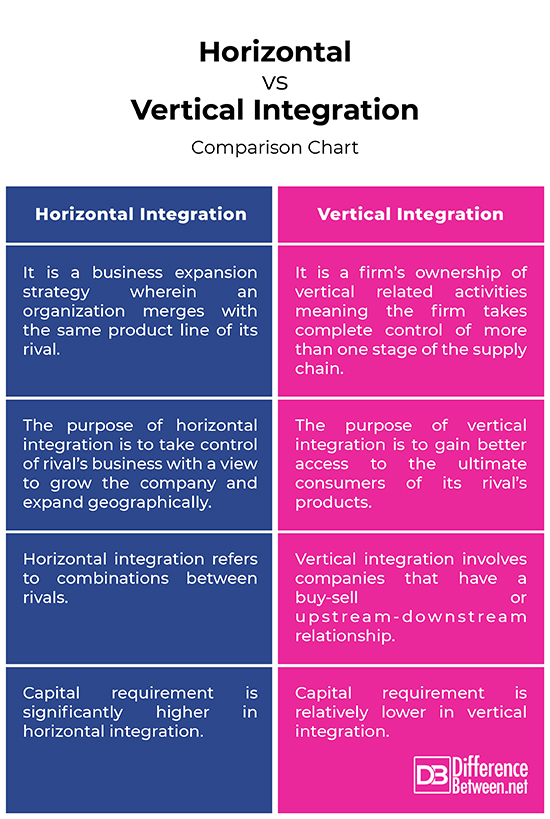
Difference Between Horizontal Integration and Vertical Integration Difference Between
What Is Vertical Integration? Vertical integration is a strategy that allows a company to streamline its operations by taking direct ownership of various stages of its production process rather.
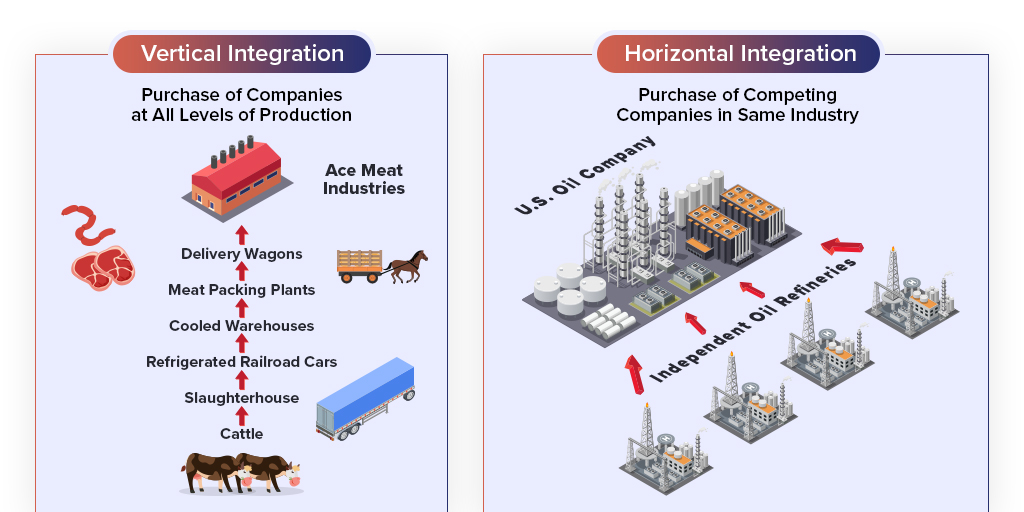
Horizontal and Vertical Integration.Horizontal integration is samim
The following chart offers a generalized illustration of horizontal versus vertical integration using the example of the automotive industry. If a company's core business is as a car manufacturer, then it might integrate vertically in one of two directions. The company could vertically integrate "backward" to capture earlier phases of.

Horizontal Vs. Vertical Integration In A nNutshell FourWeekMBA
Difference Between Horizontal Integration vs Vertical Integration. Both horizontal integration and vertical integration are part of business strategies during any business's expansion. Horizontal Integration means acquiring similar companies within the same sector and those associated with the same business activities. On the other hand.

Vertical Integration Explained How it Works (+ Examples)
Vertical integration involves controlling various stages of the supply chain, while horizontal integration entails consolidating within the same industry segment. Image Reference: DealRoom
:max_bytes(150000):strip_icc()/Vertical-integration-7a31b884b9564a139c5ec2f7885ff3f0.jpg)
Vertical Integration Explained How It Works, With Types and Examples
Horizontal and vertical integration refers to an organization's strategic approach when expanding externally, through the acquisition of, or a merger with, another company. At the end of this article, you'll understand the difference between horizontal and vertical integration, along with each approach's benefits and drawbacks.

Horizontal vs Vertical Integration StudiousGuy
Business Horizontal Integration vs. Vertical Integration: Definitions Written by MasterClass Last updated: Aug 2, 2022 • 6 min read Horizontal integration can be a viable business strategy for companies looking to increase revenue and market share in a competitive industry.